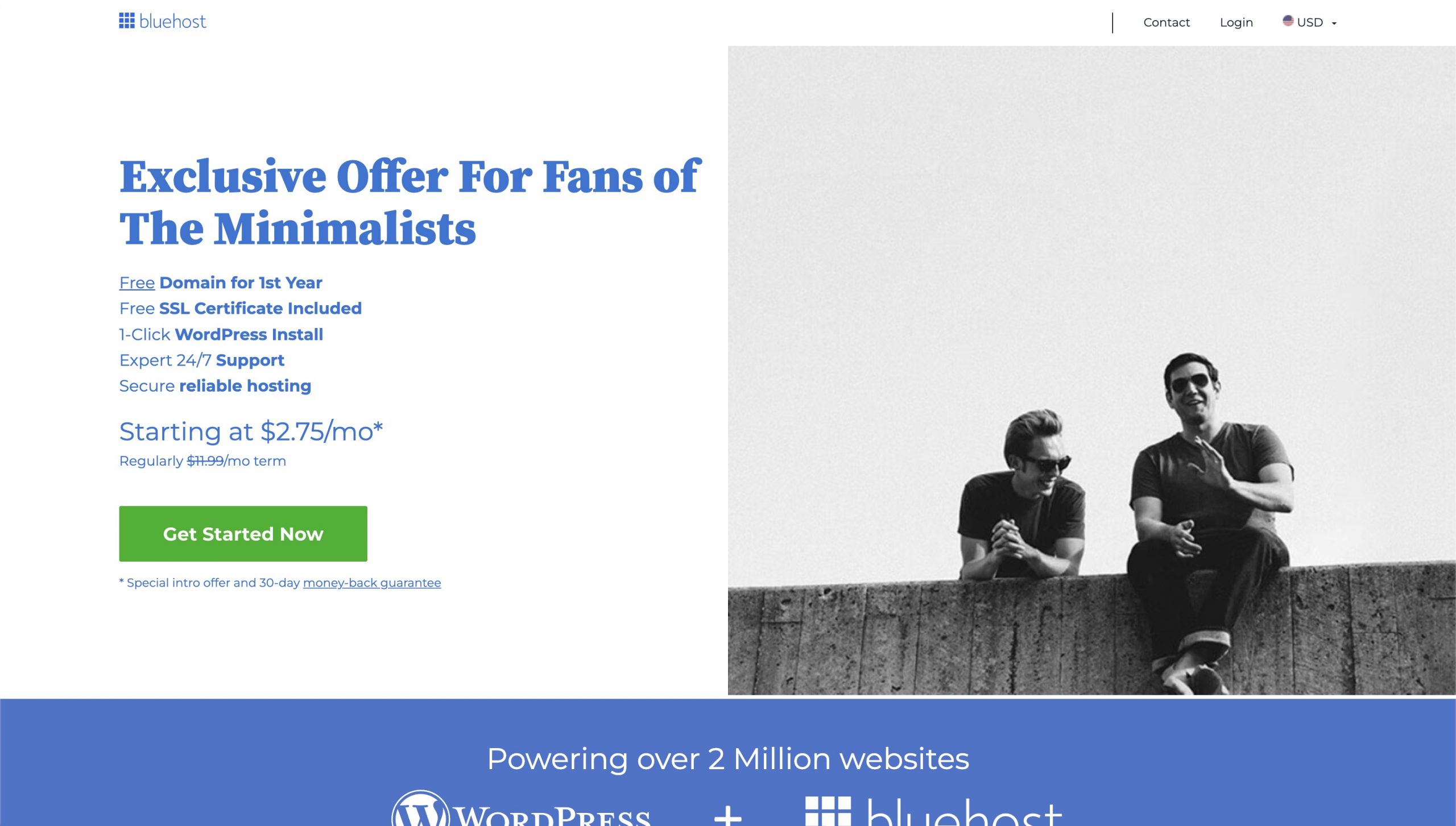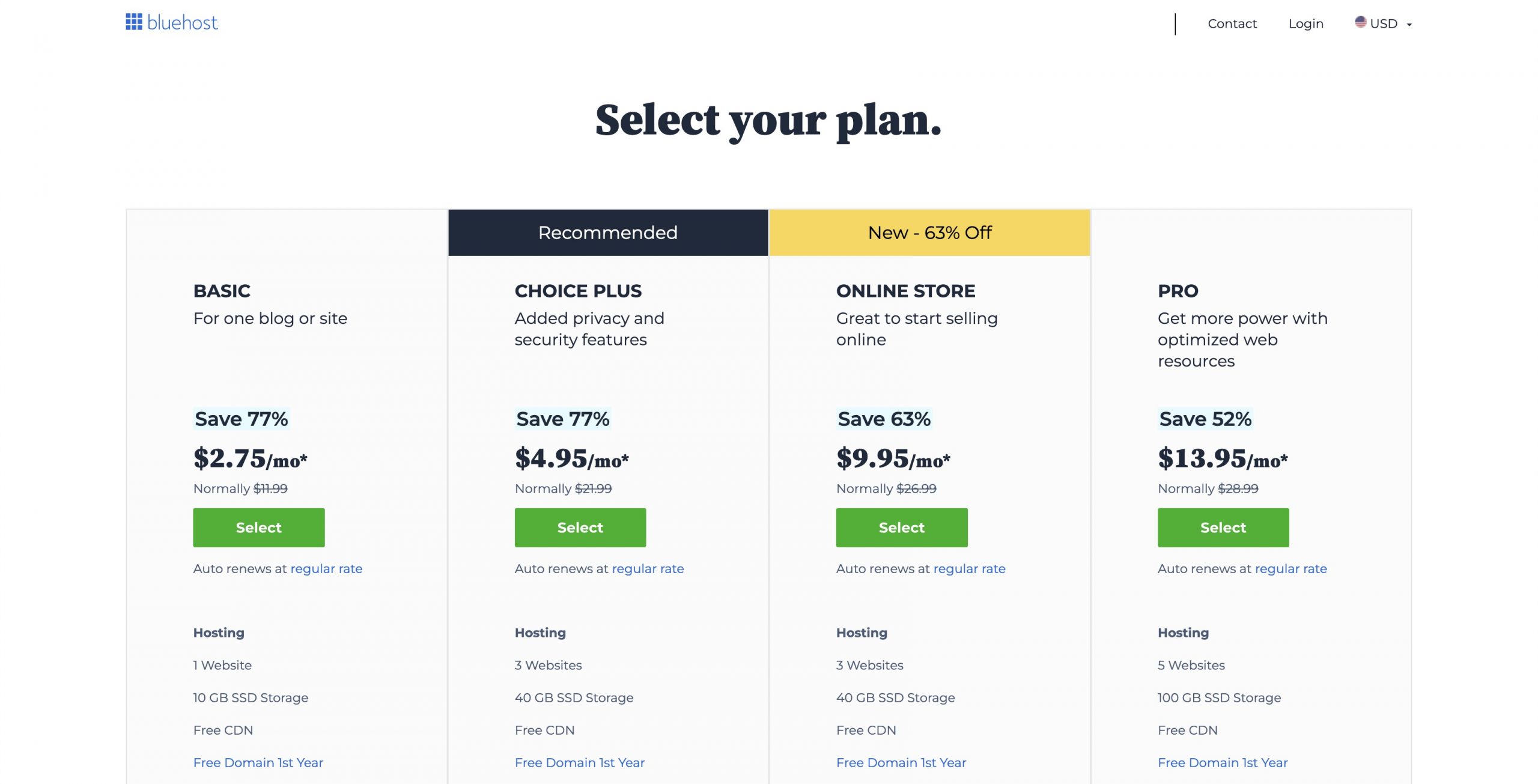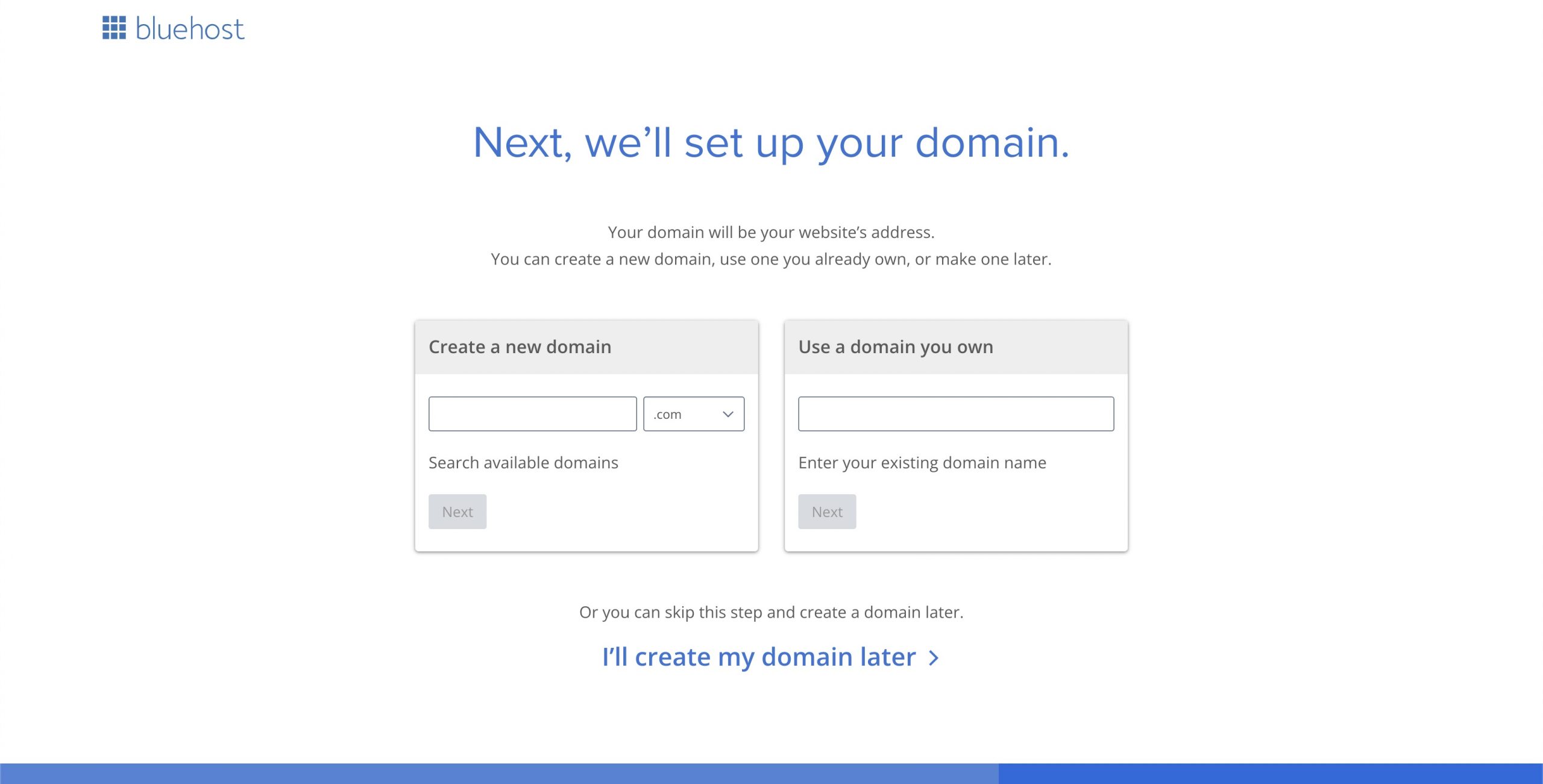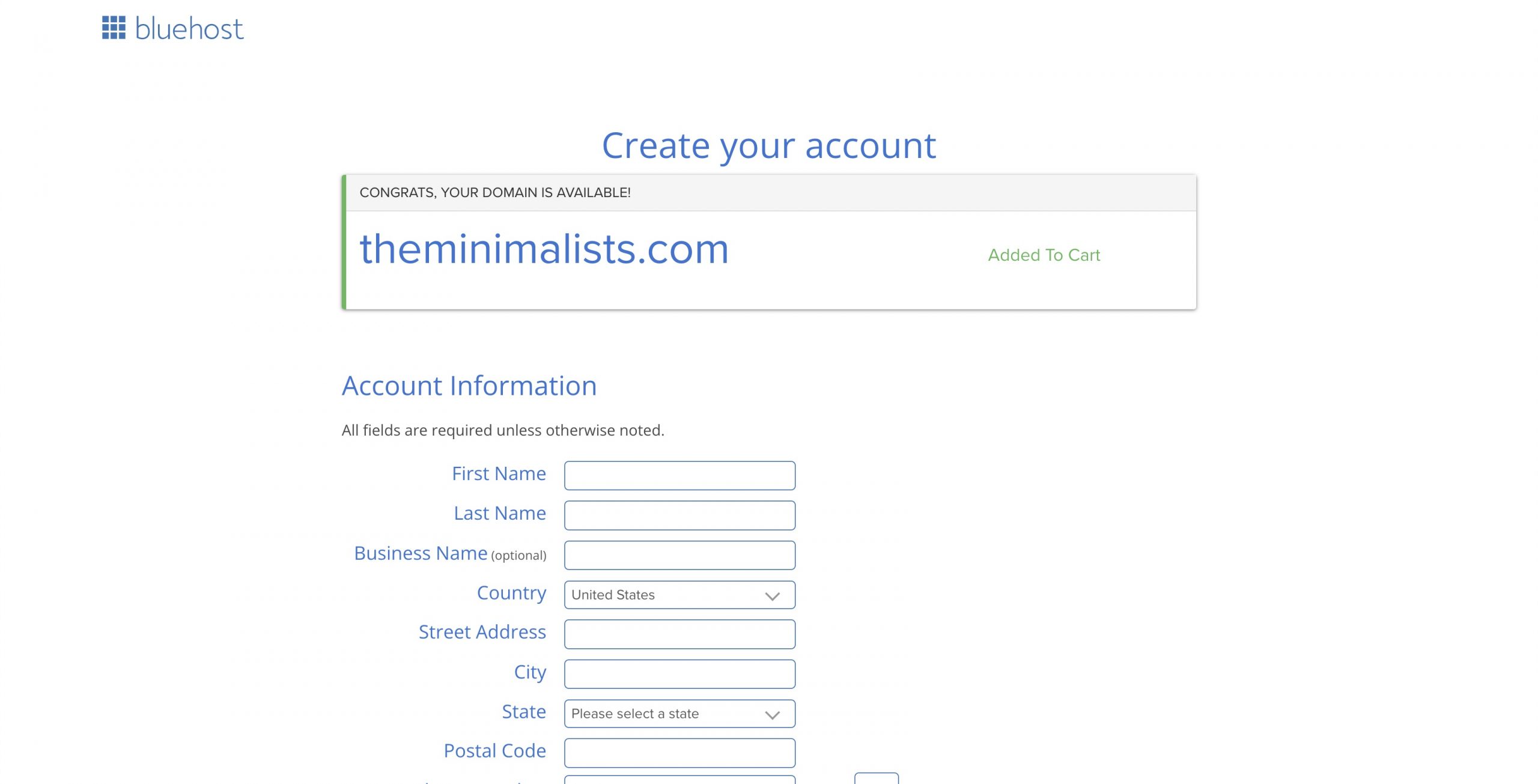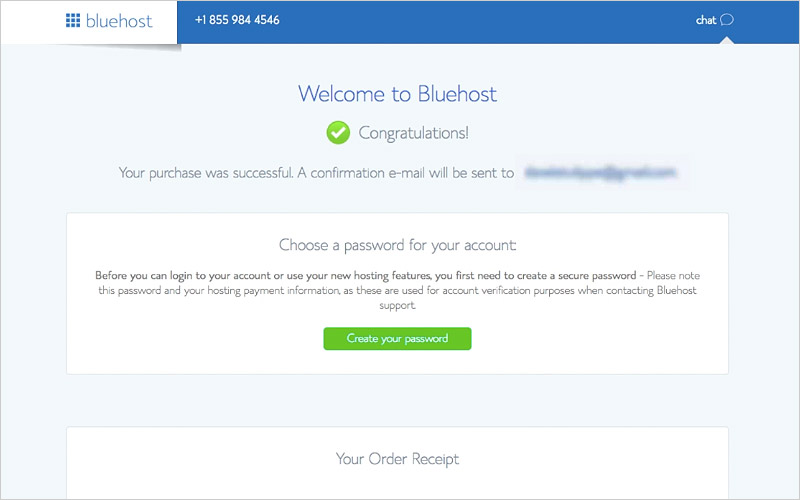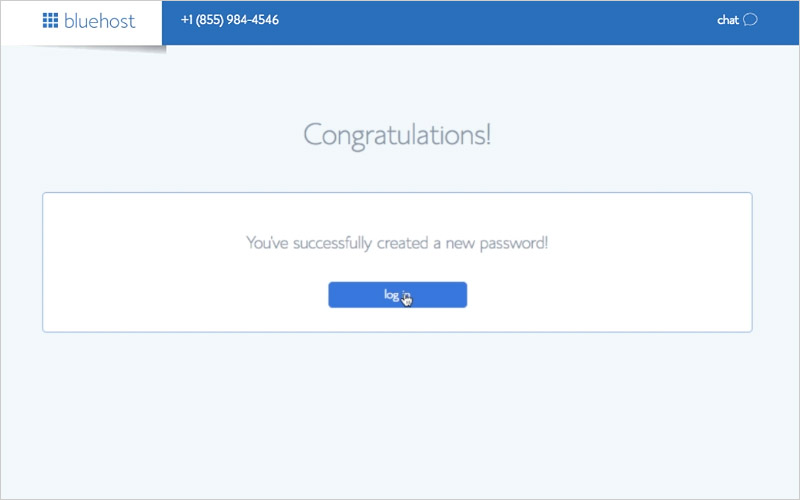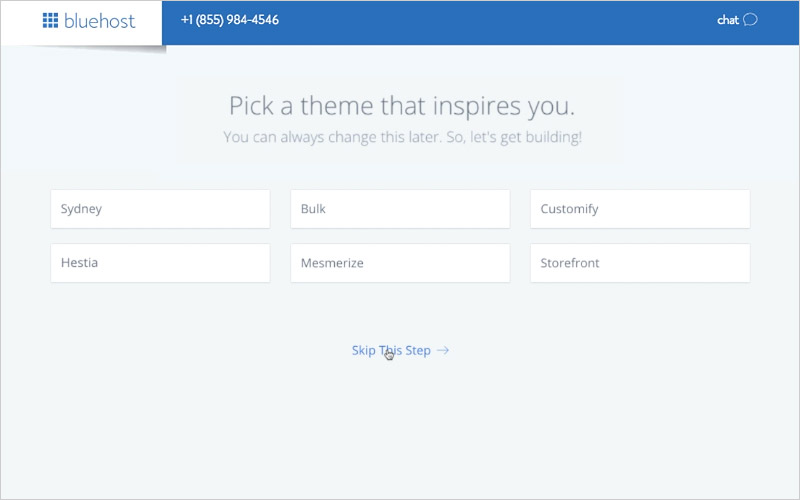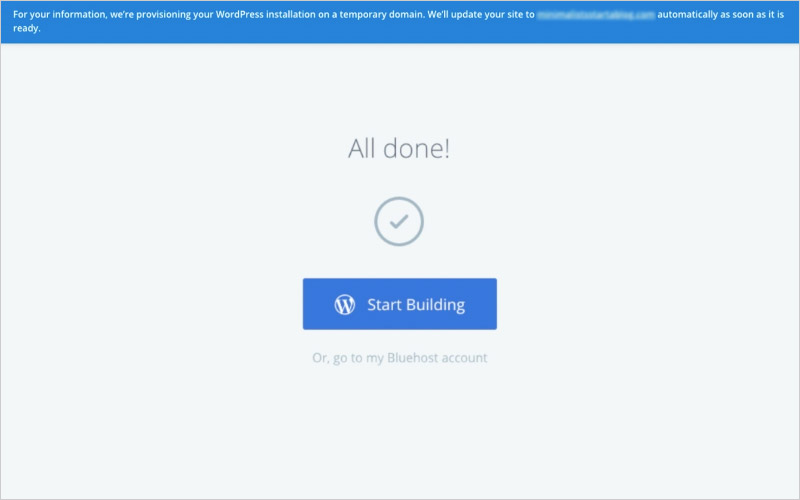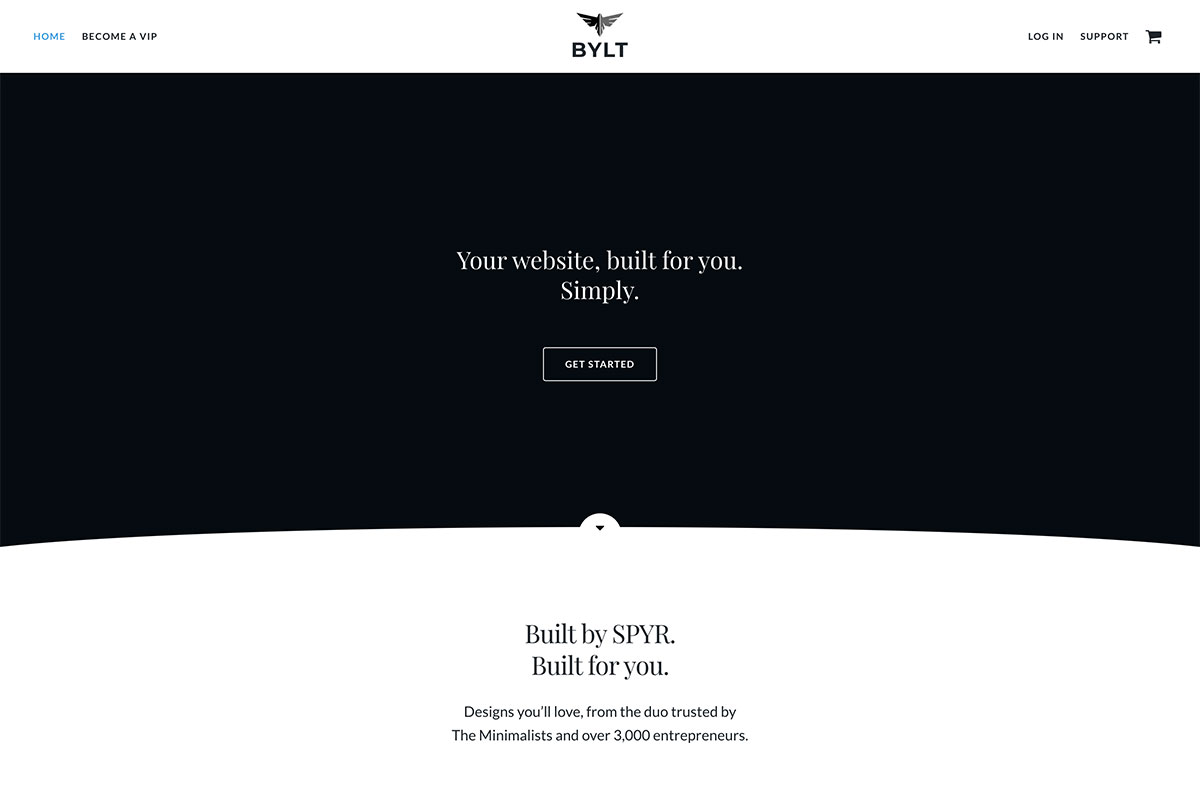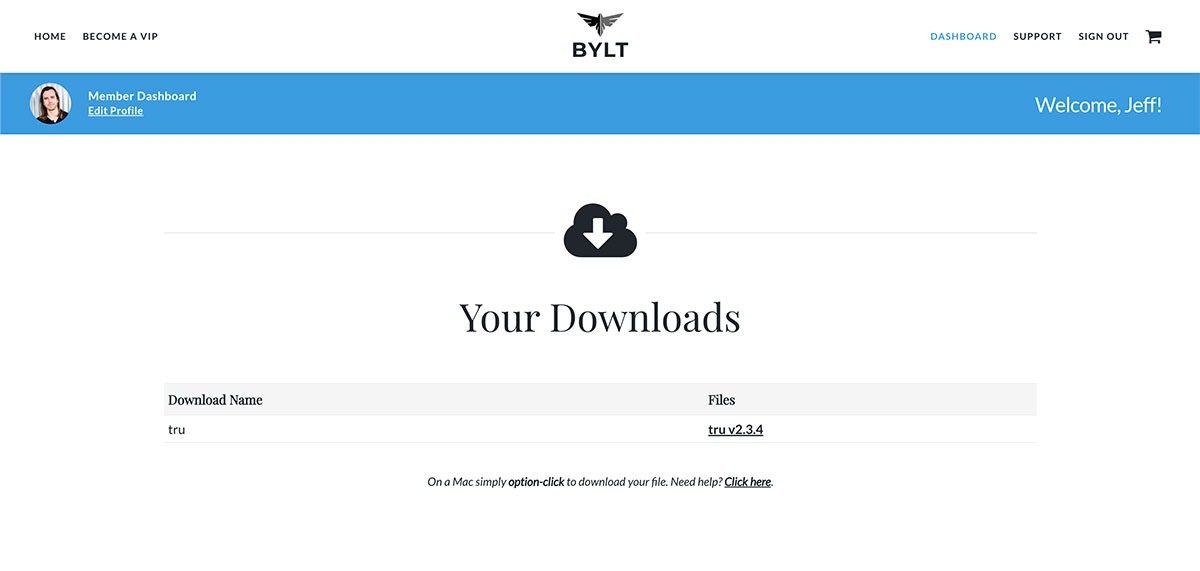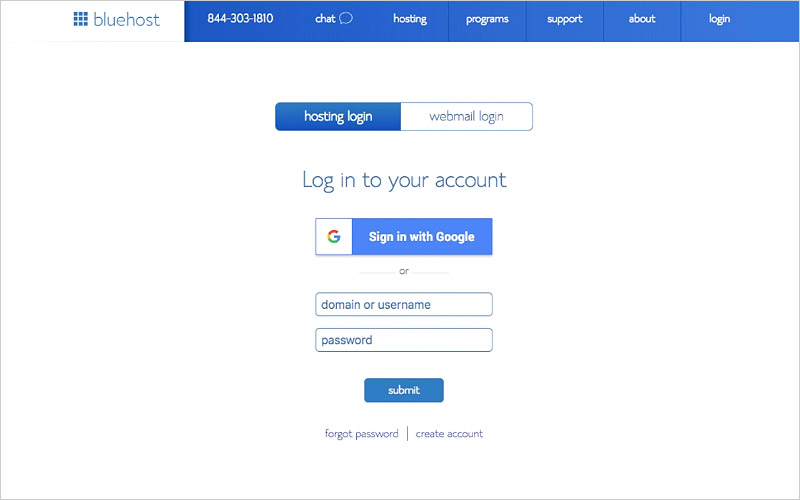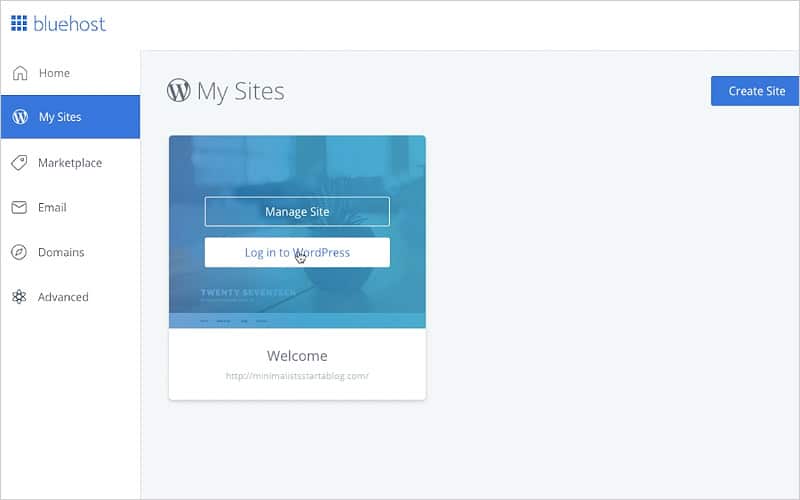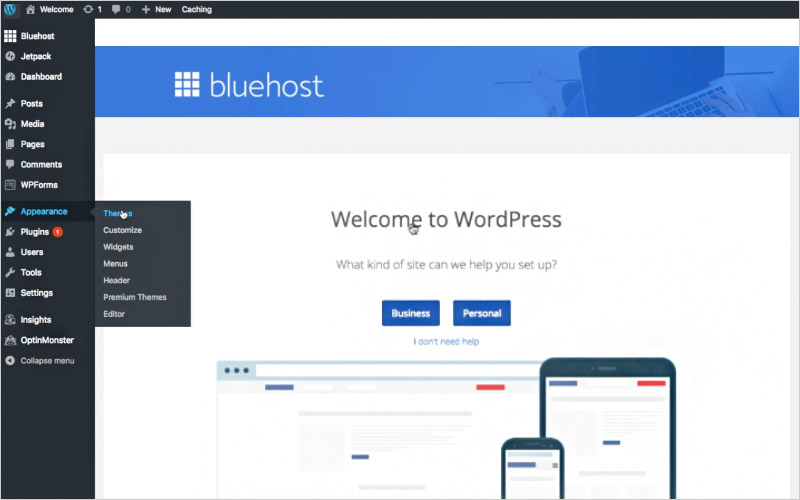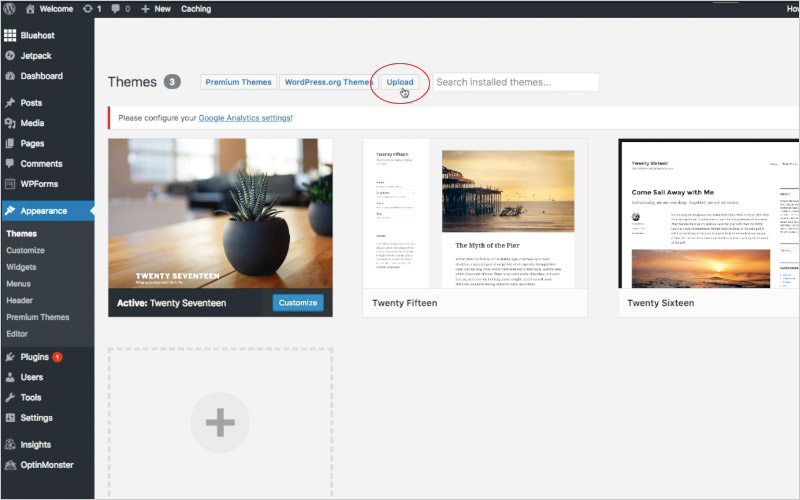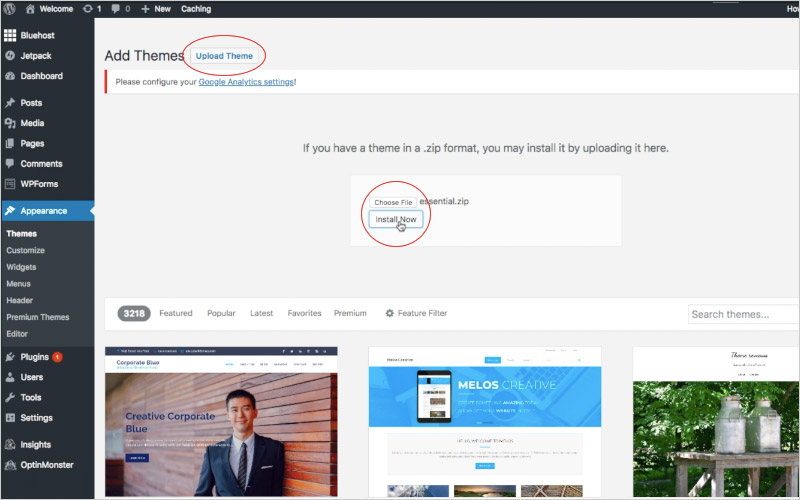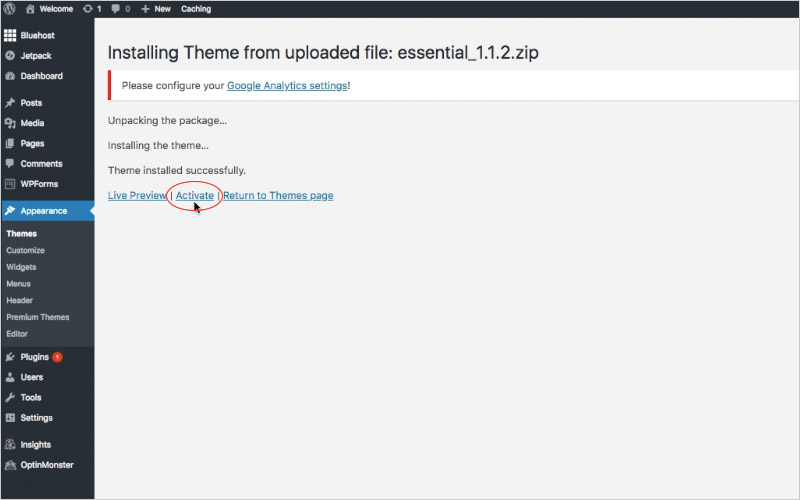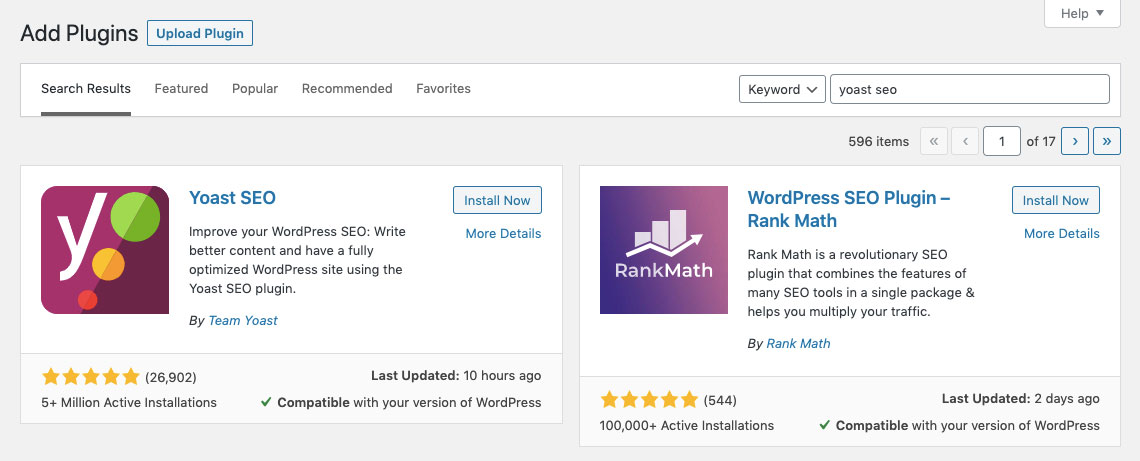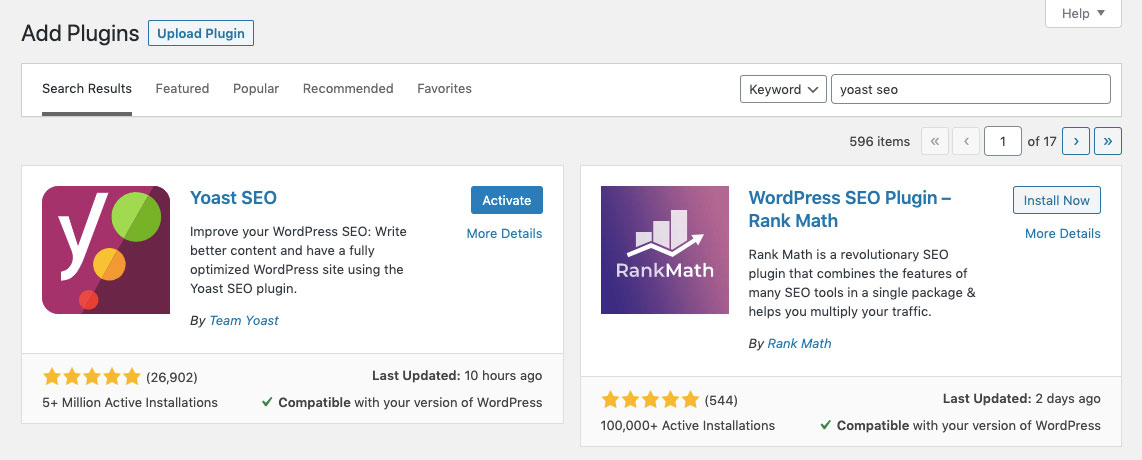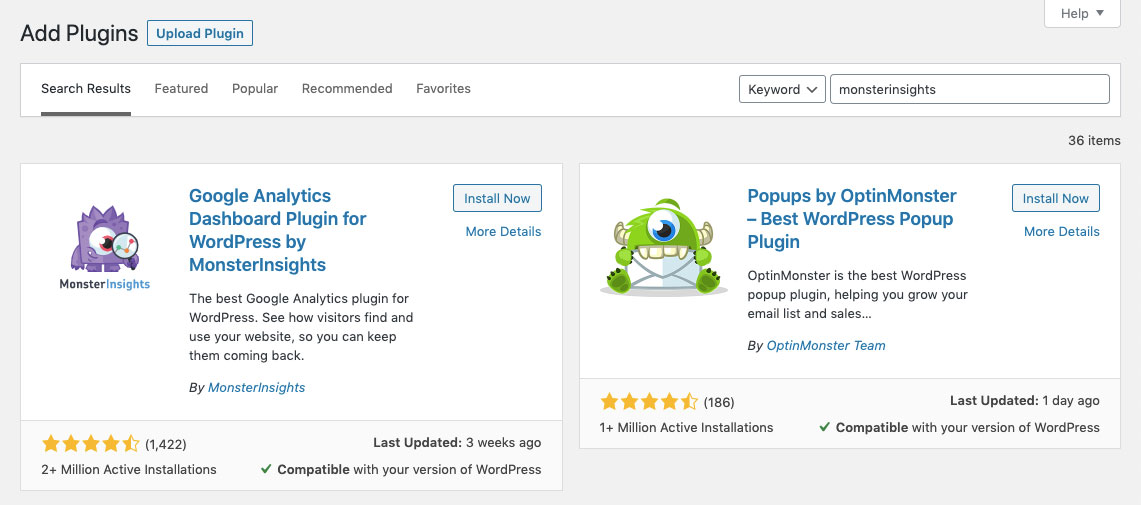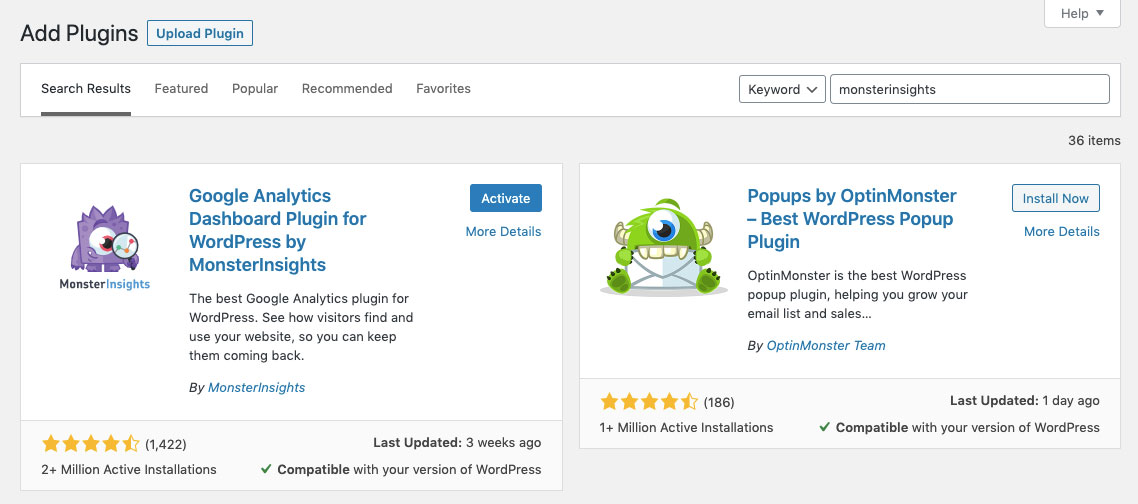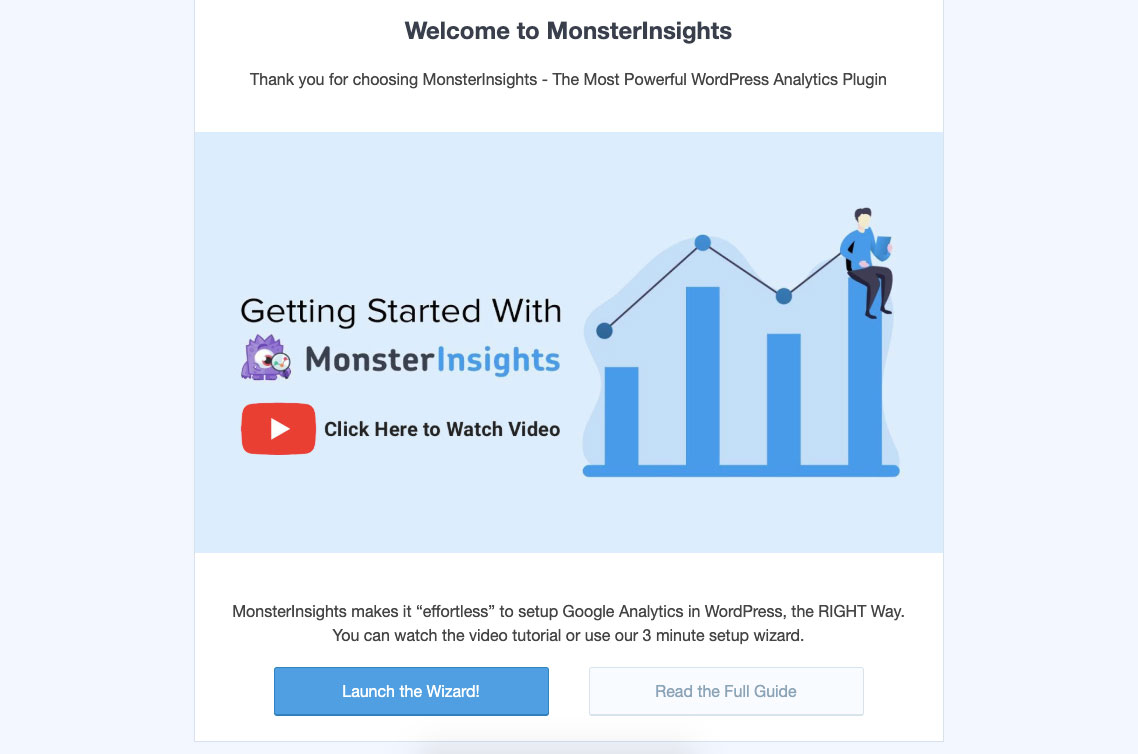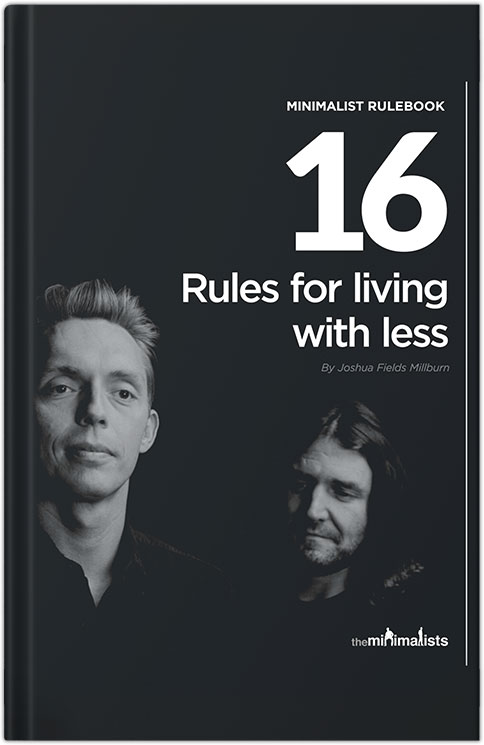Learn how to start a blog in less than an hour. Become a blogger today by following the steps we used when starting our blog, which now has reached more than 20 million people and has been seen in the New York Times, TIME magazine, and on the TODAY show.

How to Start a Blog
You can start a blog in just 5 simple steps.
- Choose your blog name and hosting.
- Build your blog with WordPress.
- Pick your design to make it your own.
- Add SEO and track stats.
- Write compelling content.
Do you want to start a blog fast?
This is a long essay and you may want to start your blog without all the detail.
This is the first how to quickly start a blog guidepost.
To start a blog fast simply:
- Look for these boxes.
- Follow the brief steps.
- Click the link to jump to the next box.
Click here to go to the first step.
How We Started This Blog
Want to create something meaningful? Why not start a blog? Why not become a blogger? Creating this blog is one of the best decisions Ryan and I ever made. After all, our blog is how we earn a living. We make money blogging, but more important it’s how we add value to other people’s lives.
So you’re thinking about starting a blog, but you don’t have any idea where to start, right? Guess what—neither did we! Before we became “The Minimalists,” we wanted to start a blog to communicate our thoughts and express our feelings, but we were overwhelmed with options.
Clueless, confused, and confounded with choices, we had no idea how to start a blog or how to be a blogger. When should we start? How do we register a domain name? What is hosting? Which blogging platform should we use? How do we choose a blog theme? What should we write about? Heck, we could hardly spell HTML, let alone build a blog!
But good news: it turns out that starting a blog is much easier than you think. We’ve learned a ton of lessons during our ascent to millions of readers, and now you can learn from our pain and suffering to avoid much of the tedium involved in setting up a blog.
How to Become a Blogger: Video Tutorial
If you prefer to watch our process for setting up a blog, we’ve created a step-by-step start a blog video, How to Become a Successful Blogger Today, which shows the entire starting-a-blog undertaking. Otherwise, read on.
How to Start a Successful Blog in 5 Steps
- Choose your blog name and get your blog hosting.
- Start your blog by adding WordPress.
- Pick a simple theme to make your blog your own.
- Add two key blogging plugins to find your readers and track stats.
- Write compelling content to create a blog that your readers love.
While there are other blogging platforms out there like Blogger, Squarespace, and Wix, nearly every serious blogger uses a self-hosted WordPress site because of its creative freedom and flexibility.
It’s not only because it’s the easiest blog to set up. The Minimalists uses WordPress because it gives us greater control over the look and feel of our blog—more creative control than any other platform. Oh, and WordPress itself is free!
These are the exact steps we took when we created this website. If you follow these five steps, you will learn how to set up a blog in less than one hour.
Step 1 Choose your blog name and get your blog hosting
The first thing we did when starting our blog was go to Bluehost and register our domain, which is free with hosting. We’ll explain hosting in a moment, but let’s talk about your domain name first.
Blogging Quick Start – Step 1
In this first step you will choose your blog name (domain name) and buy your blog hosting.
- Go to Bluehost and click the Get Started Now button.
- Select the Basic plan.
- Pick your domain name and enter it into the New Domain box.
- Create your Bluehost account.
Click here to jump to the next step.
Choose your domain name
Your domain name is an important part of your blog because it creates a first impression—it is the name of your blog. Also known as your URL, your domain is also your address on the web. For example, our domain name is www.theminimalists.com.
So, what do you want to call your blog? Maybe it’s YourName.com. Maybe it’s YourBusinessName.com. Or maybe it’s a creative brand name you thought up. If you’re having a hard time thinking of a good domain name, try Wordoid, a wonderful naming tool that will give you plenty of great options. Just make sure you don’t buy the domain from them since Bluehost will give you a free domain. (If you’ve already purchased a domain elsewhere, that’s okay, too, because Bluehost will make it easy to transfer your existing domain during the setup process.)
Set up blog hosting
Once you’ve decided on a domain name, you’ll need to set up hosting for your blog. While WordPress itself is free (see Step 2 below), you need a reliable place to host your WordPress blog (your blog needs to be on a server somewhere on the Internet).
For hosting, we recommend Bluehost for several reasons:
- We Use Bluehost. We personally use Bluehost to host The Minimalists. If you recommend a company, you better be willing to use their product yourself. We also use them to host several other websites of ours.
- Great Pricing. TheMinimalists.com is a Bluehost affiliate partner, which means that in addition to using their service, we also receive a commission for referring new customers. To be fair, though, we would still use Bluehost even if we weren’t an affiliate—we’ve used them for a long time. Ergo, we don’t recommend Bluehost just because we’re an affiliate (every hosting company offers a similar affiliate program); we recommend Bluehost because they are the best, most reliable option. Plus, because we’re a partner, Bluehost offers a more than 50% discount for The Minimalists readers: only $1.99 a month for the first year.
- Free Domain. When you sign up for hosting, Bluehost will give you a free domain name, which allows you to avoid the upfront and recurring fees associated with purchasing a domain on your own. If you’ve already purchased your own domain name, don’t worry; you can still use your domain with Bluehost (it’s just one extra step).
- Money-Back Guarantee. Bluehost offers a 30-day money-back guarantee, so there’s no risk if you change your mind.
- Reliability. Bluehost’s facilities are world class. They have their own custom-built 20,000-square-foot datacenter with enough backup generators to power a city.
- Friends & Family. Many of our friends and family also use Bluehost to host their blogs.
Now that you’re ready to get started, go to Bluehost and click the Get Started Now button.
Next choose your hosting plan.
You’ll see that prices range from $3 to $6 per month, depending on whether you want a basic, single blog hosting plan or a more robust plan that allows you to create multiple blogs.
Once you select your plan you’ll choose or enter your domain name.
If you don’t own a domain name simply enter your desired blog name into the New Domain box.
If you’ve already own a domain name simply enter that into the I have a domain name box.
Click Next.
Finally create your blogging account.
And click Create your password to complete your blog hosting setup.
Just like that you’ve nearly become a blogger!
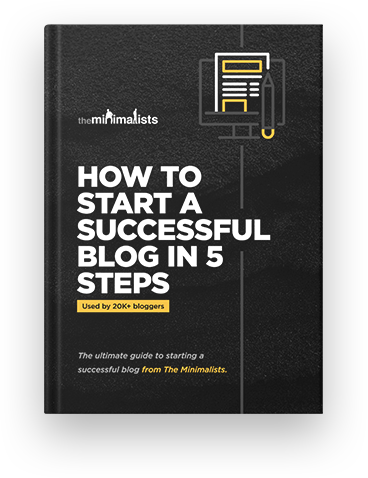
How to Start a Blog Ebook
Pressed for time? Learn how we started our successful blog using this free ebook.
Step 2 Start your blog by adding WordPress
Next you will install WordPress, which is free. Don’t let the word “install” intimidate you, though. It’s much easier than it sounds and Bluehost does all the work for you.
Blogging Quick Start – Step 2
Next you’ll install WordPress.
- Click the Log In button.
- Click Skip This Step on the Pick a theme screen.
- WordPress is now installed, click Start Building to go to your dashboard.
Click here to jump to the next step.
To begin simply click Log In.
Bluehost provides several blog design options, but simply scroll to the bottom and click Skip This Step (you’ll see why in a moment).
WordPress is now installed. Simply click Start Building to go to your new blogging dashboard and continue to Step 3.
Step 3 Pick a simple theme to make your blog your own
A theme allows you to pick a design for your blog without the need for coding expertise or design knowledge. In other words, a good theme helps you to design your blog exactly how you want it to look. If you’re not a coder (I’m certainly not a coder), then a theme makes the design work a million times easier.
Blogging Quick Start – Step 3
Next you’ll choose and install your blog’s WordPress theme.
- Go to BYLT.
- Purchase the theme that fits your style (we use the tru Theme).
- Download and save your theme’s .zip file to your Desktop.
- Return to your WordPress dashboard and go to Appearance > Themes.
- Click Upload and then Upload Theme.
- Click Choose File, select your theme .zip file, and click Install Now.
- Click Activate.
Click here to jump to the next step.
Our blog design is from BYLT, a platform created by our good friends at SPYR. They have several beautiful, simple WordPress themes to choose from, and, in fact, you can purchase the same theme we use if you like.
Simply go to BYLT and find the minimalist WordPress theme that best fits your desired aesthetic. Their themes are feature-rich; plus, once you buy your theme, you will have the same team supporting your work that we trust to support ours.
Once you purchase your theme you’ll be able to download your WordPress theme (a .zip file) from your BYLT Dashboard. Save this file to your Desktop because you’ll need to upload it to WordPress in just a moment.
Remember how easy it was to install WordPress? Well installing your blog theme is just as simple.
First return to your WordPress Dashboard.
You should already be logged in, but whenever you are signed out go to my.bluehost.com, enter your new domain name (or username), your password, and click Submit.
From here, go to My Sites and click on Log in to WordPress.
Next, in your WordPress dashboard, go to Appearance > Themes.
Next, click the Upload button.
Then, click the Upload Theme button followed by the Choose File button.
Find the .zip file you downloaded from your BYLT Dashboard (this is your theme file) and click Install Now to install your new simple blog design.
Finally, click Activate and your blog theme is installed.
Step 4 Add two key blogging plugins to find your readers and track stats
Plugins are third-party appendages that add additional functionality to your blog.
Blogging Quick Start – Step 4
In the final setup step you’ll install two plugins that will improve your blog’s features.
- In your WordPress Dashboard go to Plugins > Add New.
- Search for Yoast SEO. Click Install Now followed by Activate.
- Click the Add New button to add one more plugin.
- Search for MonsterInsights and click Install Now followed by Activate.
- Click the Launch the Wizard! button to configure MonsterInsights.
Click here to jump to the next step.
It’s best to keep your number of blog plugins to a minimum and install only the best ones, because too many plugins—as well as unreliable plugins—can slow down your site. We use very few plugins at The Minimalists.
In this section you’ll install and activate the following free plugins:
- Yoast SEO is the defacto standard SEO plugin for WordPress. For details and everything you’d ever want to know about WordPress SEO read Yoast’s Definitive SEO Guide.
- Google Analytics for WordPress by MonsterInsights allows you to track your blog’s traffic easily and with lots of interesting data: overall traffic, traffic sources, views per author & category, automatic tracking of outbound clicks and pageviews.
In your WordPress dashboard go to Plugins > Add New.
Search for Yoast SEO.
Then click Install Now followed by Activate and your blog will immediately have improved SEO.
Next search for MonsterInsights.
Then click Install Now followed by Activate.
Next click Launch the Wizard! and follow the steps to complete the MonsterInsights setup.
Finally, so people can receive our blog posts via email, we have an email newsletter. For a feature-rich email-subscription service we recommend ConvertKit (affiliate link). (By the way, if you don’t already, subscribe to The Minimalists’ blog via email.)
Step 5 Write compelling content to create a blog that your readers love
Congratulations! You started a blog, and now it’s time to start blogging. This is where the fun begins.
Now that you have your own blog, you get to make it yours; you get to turn your vision into a reality.
- Content. Start writing and publishing the content for your basic pages: create an About Page, Contact Page, Start Here Page, and any other page you want in the header of your new blog.
- Photo. Add a photo of yourself (pro tip: you can start with a well-lit selfie, but when you get a chance, get some professional photos taken; they’re well worth the cost because people identify with other people more than they identify with logos).
- Logo. Create a basic logo using a program like InDesign, Photoshop, or a text editor (note: even though we have no design skills, we were able to use Apple’s Pages application to create our simple logo after downloading some free vector art and choosing the typeface that best suited our aesthetic). Or you can find someone on a site like Fiverr or hire a designer like SPYR to create a professional logo.
- Images. Spice up your blog posts with high-quality stock photos and images: Unsplash (free), Library of Congress (free), iStock (fee-based), Shutterstock (fee-based).
- Comments. Determine whether or not you want comments on your blog; they are often a useful way to receive feedback and directly engage with your readers.
- Social. Establish a social media presence on X (Twitter), Facebook, or Instagram (or all three).
- Publish. Start writing new blog posts. Publish at least once a week, especially when first starting a blog, so you can build an audience. Below you’ll also find 20 blogging tips to improve your writing in the How to Blog section, as well as 15 reasons you should start a blog and 3 reasons not to start a blog.
We hope you have loads of fun expressing yourself on your new blog. We’re certain it will be a huge growth experience for you during the coming months. You have now officially become a blogger. Wherever you’re going, make sure you enjoy the journey ahead.
How to Blog: 20 Blogging Tips to Improve Your Writing
We receive many emails asking how to blog, about blog topics, and about creating meaningful content. The bulk of this essay explained how to start a blog, but that’s just the initial step. Now it’s time to start writing and publishing your content.
Here, to answer the frequently asked “How can a beginner start blogging?,” are 20 tips for beginners on how to blog.
- Find Your Niche. You needn’t have a niche, but it helps. When learning how to be a blogger, it’s important to ask yourself what you’re passionate about. Running? Cooking? Being a parent? Have you found your passion? If so, whatever it is, write about that. If not, then you must first find your passion. Note: We generally recommend that people don’t start a blog about minimalism or keto or any other heavily saturated topic. But what we really mean when we say this is: don’t create a blog about something unless you have a unique perspective. If you’ve embraced simple living and have a unique perspective, then by all means have at it.
- Define Your Ideal Readers. Once you’ve found your niche, you need to know who will be reading your blog. For example, we blog about living a meaningful life with less. Thus, our ideal readers are people who are interested in exploring minimalism so they can clear the path toward more meaningful lives. If you want to write about your newborn baby growing up, that’s wonderful: your ideal readers are probably your friends and family. If you want to write about restoring classic cars, that’s cool, too. Tailor your writing to your readers (whether it’s your family or local community or whoever else will read your blog).
- Add Value. Your blog must add value to its readers’ lives. You want to help people solve problems. This is the only way you will get great quality readers to your site (and keep them coming back). Adding value is the only way to get someone’s long-term buy-in. We both learned this after a decade of leading and managing people in the corporate world. With everything you write, it’s worth asking: Is this adding value?
- Be Original. Yes, there are other blogs out there about the same thing you want to write about. Question: So why is your blog different? Answer: Because of you. You are what makes your blog different. It’s about your perspective, your creativity, the value you add.
- Be Interesting. Write interesting blog posts. Especially if you want people to share it with others.
- Be Yourself. Part of being interesting is telling your story. Every person is unique, and your story is an important one. The important part of storytelling, however, is removing the superfluous details that make the story uninteresting. A great storyteller removes 99% of what really happens—the absorptive details—and leaves the interesting 1% for the reader.
- Be Honest. Your blog needs to be authentic—it needs to feel real—if you want people to read it. You can be your blog, or your blog can be you. That is, do you really embody the stuff you write about? If not, people will see through it.”Be the change you want to see in the world,” is the famous Gandhi quote. Perhaps bloggers should build the blog they want to write for the world.
- Transparency. Being transparent is different from being honest. You needn’t share every detail about your life just for the sake of being honest. Always be honest, and be transparent when it adds value to what you’re writing. (Because everything we write must serve the greater good, you won’t ever see pictures of us using the restroom—that’s simply not relevant.)
- Time. Once you’ve learned how to start a blog, you’ll learn that blogging takes a lot of time, especially if you’re as neurotic as we are. That said, once you have your design set up, don’t tweak it too much. Instead, spend the time on your writing.
- Vision. The reason our site design looks good is because we have a great host, we have a great theme, and, most important, we had a vision of how we wanted our blog to look. Once we had the vision, we worked hard to make that vision a reality. (Note: neither of us had any design experience before starting a blog.) It’s hard to create a beautiful blog if you don’t know what you want it to look like.
- Find Your Voice. Over time, good writers discover their voice and their writing tends to develop a certain flow, one that is appealing to their readers. Finding your voice makes your writing feel more alive, more real, more urgent. For additional reading, check out our blog post about Finding Your Voice.
- We Instead of You. Use the first-person plural when possible. Statements of we and our are more powerful than you and your, especially when talking about negative behaviors or tendencies. The first person comes off as far less accusatory. Think of it this way: we’re writing peer-to-peer—we are not gods.
- When to Post. Question: When is the best day and time to publish a blog post? Answer: It doesn’t really matter. We don’t adhere to a particular time-of-day schedule, but we do publish at least once a week because consistency is important. You needn’t get bogged down in the details, though.
- Social Media. Yes, we recommend using X (Twitter), Facebook, and Instagram to help connect with your audience and other bloggers, but don’t get too caught up in it. Focus on the writing first, social media thereafter.
- Ignore Negative Criticism and Stupidity. Sure, we get a lot of negative comments and stupid questions from ignorant people who aren’t really our readers (“You’re not real minimalists!”). We call these people seagulls: They fly in, crap on your site, and fly away. But we pay them no mind, because we didn’t start our blog for them. Delete their comment and move on.
- Research. Spend time researching what you’re writing about. The reason we are able to use so many helpful, relevant links in our essays is because we put in the time to research our topics.
- Keep It Simple. This is where minimalism can be applied to starting any blog, irrespective of its genre. No need to place superfluous advertisements or widgets all over your site. Stick to the basics and remove anything you don’t need—remove anything that doesn’t add value.
- Picture. Put a picture of yourself on your blog. People like to see the face of the person who’s writing the blog. If two goofy guys from Dayton, Ohio aren’t too afraid to put their pictures on their site, then you have nothing to worry about.
- Comments. If you’re going to have comments on your site, then read The Five Words That Kill Your Blog by Scott Stratten.
- Live Your Life. You’re starting a blog about your life (or about certain aspects of your life, at least), so you still need to live your life. There are things that we always put before blogging: exercise, health, relationships, experiences, personal growth, contribution. Simply put, live a life worth writing about.
15 Reasons You Should Start a Blog
We were inspired to research and write this blog post after reading Joshua Becker’s 15 Reasons I Think You Should Blog, in which he discusses 15 great reasons why you should start a blog.
Why is the keyword here. Crucially, Becker writes about the purpose of blogging, not just how to start a blog. That’s what many of these other “blogs about blogging” seem to miss: they miss the purpose—the why behind starting a blog.
Here is a summary of our three favorite reasons from Becker’s list:
- You’ll become a better writer. “At its core, writing is communication. It is about recording thoughts on paper and compelling others to agree with them,” writes Becker. “To that end, writing (just like every other form of communication that has ever existed) improves with practice. Blogging will not force you to become a better writer, it’ll just happen as you do it. And becoming a better writer holds important benefits for the rest of your life—whether you are creating a book, a presentation, a resume, or an anniversary card for your spouse.” Spot on! Writing blog posts is not only a great way to improve your blog writing, it’s a wonderful chance to improve everything you write—from business emails and text messages to that novel you’ve been dreaming of penning.
- You’ll meet new people. “Whether it be through comments, emails, or social media, you may be surprised at how quickly you meet people online,” writes Becker. That’s true! The Minimalists’ blog is responsible for many of the most important relationships I’ve developed over the past decade—long-term business and personal relationships birthed from this very blog
- You’ll become more confident. “Blogging will help you discover more confidence in your life,” writes Becker. “You will quickly realize that you do live an important life with a unique view and have something to offer others.” So true! Writing helps us better understand the lives we live and the consequences of our actions.
3 Reasons You Should Not Start a Blog
So now you have 15 reasons why you should start a blog, and we’ve shown you how to start a blog, step-by-step, based on our personal experience.
But after giving you those detailed instructions, which could save you hundreds of hours of wasted time, we also want to give you some good reasons why you should not start a blog. (Keep in mind that these reasons are just our opinions, and we do not pretend to offer them up as a collection of empirical blogging maxims.)
- Money. You should not start a blog to make money. We need to get that out of the way first. If your primary objective is to replace your full-time income from blogging, forget about it. It doesn’t work that way. Do you think that Jimi Hendrix picked up his first guitar so he could “supplement his income”? No, he didn’t. Rather, he did it for the love of it, for the joy and fulfillment he received, and the income came thereafter—much later actually.
- Notoriety. Don’t plan on getting “Internet famous” right away. Not every site grows as fast as ours did, but that’s okay. The truth is that we kind of got lucky. We found a great domain name, we cobbled together a logo and site design that people liked, we write fairly well, and our content connected with people in a unique way. We didn’t start this site to become “famous,” though. That’d be ridiculous. We started this site to become bloggers and share a message. Our popularity came as a surprise to us, and it was a result of a little luck and a lot of hard, passionate work.
- Traffic. Not all traffic is good traffic, so don’t worry about getting thousands of readers right away. Spend your time producing meaningful creations and eventually the audience will show up if you are helping people solve problems. In other words, focus on adding value, not increasing traffic.
The funny thing is that all these things can happen. You could make a full-time income from building a blog. We do it and so do many others. And you could become an Internet famous blogger like Leo Babauta.
But if these are the sole reasons you start blogging, you’ll be miserable because it will seem like a job. And if it feels like a job, you won’t be passionate about it, so you’ll either hate it or fall flat on your face (or both).
Instead, become a blogger and write because you’re passionate about it…
4 Blogging Resources
If you want to learn more about blogging, publishing, writing, and SEO, then check out these additional resources:
- What Kind of Media Counts? (Seth Godin)
- How to Publish an Indie Book (Asymmetrical Press)
- How to Write Better: Online Class (Joshua Fields Millburn)
- Some Funny Thoughts on SEO (Exile Lifestyle)
How to Start a Blog Infographic
FAQs When Starting a Blog
- How do bloggers get paid? Do bloggers make a lot of money? Are blogs still profitable in 2025?
- How many hours do bloggers work?
- Is blogging hard to do? What do bloggers actually do?
- What does blog stand for? What does blog mean?
- Which blogging platform should I use? Squarespace vs WordPress: What is the best site to write a blog?
- How do I become a blogger?
- What’s the difference between a blog and a website?
- Are blogs dead?
- Does anyone read blogs anymore? Is blogging a waste of time?
- Are blogs still relevant in 2025? Is it worth starting a blog in 2025? Is it too late to start blogging?
- Should I start a blog or should I start a podcast?
- Do I need a business to start a blog?
- Is blogging a realistic career? Do careers in blogging have a future? Is blogging a good career?
- What has replaced blogging?
- Which blog content is best? What should I blog about?
- What does a good blog look like? What is a blog used for? What makes a good blog?
- What makes a blog successful?
- What kind of blog is most popular? Which type of blogs are most searched? What are popular topics to blog about?
- How do you start a blog with no money? How do you start a blog for free?
- How often should I blog?
- What should my first blog post be about?
- How do you introduce yourself in a blog?
- Why do blogs fail?
- Does Bluehost charge monthly or all at once?
- What is the difference between a blog and a vlog?
- What does the B in blog mean?
- Do blogs or vlogs make more money?
- Can you make money from a blog alone?
- What does a blog look like?
- Do you need a license to run a blog? Do I need an LLC to make a blog?
- Do I need to copyright my blog?
- How do I protect my photos on my blog?
- How do I register my blog name?
- Do I need to trademark my blog name?
- Is it OK to use stock photos on my blog?
- Can I use Google images on my blog?
- Should I use my full name on my blog?
- Should a blog have a home page? Should my blog be on my homepage? What should I put on the front page of my blog?
- Can everyone see my blog?
- What is an attention grabbing sentence? What is a hook sentence for a blog? What is a good hook example?
- Do you have a question that we didn’t answer?
How do bloggers get paid? Do bloggers make a lot of money? Are blogs still profitable in 2025?
How to make money blogging is the topic that beginner bloggers tend to be most interested in. At The Minimalists, we earn money in several ways:
- Creations. By building an audience who finds value in our message, we’ve been able to offer our three books and our documentary, Minimalism, to an audience who is willing to support our creative work. Consequently, all three books have been bestsellers and are now translated into more than a dozen languages; and thanks to Netflix, our documentary is available in 190 countries. (For more information about our book-publishing process, read this blog post series: How to Publish an Indie Book.)
- Audience Contributions. Since we refuse to clutter our blog or popular podcast with ads, we depend on audience support to fund production of our podcast. With more than 5,000 supporters on Patreon and many others via PayPal, The Minimalists Podcast is fully funded with audience support, which means we’re able to pay for our podcast producer, filmmaker, and studio space without advertisements on our platforms.
- Speaking. As we built our audience, many organizations, universities, and conferences began contacting us about speaking at their events. At first, we starting speaking for free just to build a name for ourselves. Then, we started charging a few hundred dollars per event. Now, we’re able to charge significantly more money because the demand for our talks is high. So far, The Minimalists have spoken at Harvard, Apple, Google, Allstate, SAP, SXSW, TEDx, and many other organizations. We speak about a wide array of topics, from simple living and “simple work,” to health, relationships, writing, publishing, social media, personal growth, and contribution—and it all started because we started this blog. (Anyone who is interested in hiring us to speak can visit our speaking page for details.)
- Tours. Over the past eight years, The Minimalists, have embarked on eight speaking tours, including 2017’s 50-city “Less Is Now” theater tour, which attracted an average of more than 1,000 people a night, with considerably larger audiences in bigger cities. Our 2014 “Everything That Remains” bookstore tour spanned 119 cities in eight countries and attracted 75,000 attendees.
- Writing Classes. I get countless questions about writing, so I’ve been able to transfer that skillset to help hundreds of students improve their writing over the years. I teach a four-week online writing class designed to improve the writing of people at any skill level—beginner, intermediate, or professional.
- Amazon Links. If The Minimalists recommend a product like this photo scanner, and then a reader purchases that product, we receive a small commission for that sale at no additional cost to our audience. We’re careful about what we recommend, however, because, as minimalists, we want you to consume less and to consume intentionally.
- Affiliate Sales. When we recommend services such as Bluehost and ConvertKit, we receive a referral fee. Once again, though, that’s obviously not why we recommend these services. Virtually every hosting company has an affiliate program, so we think it’s best to recommend the companies we trust.
Through these various means, Ryan and I are able to earn a full-time income through blogging. But it’s worth noting that making money from your blog is not the best place to start.
While there’s nothing wrong with making money—which you can do through affiliate links, advertisements, and your own products and services—the best reason to start blogging is because you have something to express.
If you make money along the way, that’s great. In fact, if you help people solve their problems, you’re all but guaranteed to make money from your blog—eventually. Let’s just remember there are at least four resources that are more important than money: skills, time, energy, and attention.
That said, let’s not kid ourselves by acting as if making money is irrelevant—it’s not. Making money from our blog is simply not the primary driver for our creativity or why we became bloggers. Although people often think of money as the ultimate resource, it is the least important of the five mentioned above.
Money won’t necessarily improve your life, but it will amplify your existing behaviors. If you have bad habits, then more money will make your life considerably worse. And if you’re already a generous person, then more money can help you be more loving, caring, and considerate.
How many hours do bloggers work?
Personally, I write one or two blog posts per week, usually in the evenings, or on weekends, so it doesn’t get in the way of my other activities. That’s the nice thing about blogging: you get to write whenever you want-no one tells you what to do, when to do it, or how much must be done. Within five months of learning how to blog, you’ll find your own rhythm that works for you.
Is blogging hard to do? What do bloggers actually do?
Starting a blog is fun and simple. Using the instructions in this post, you can set up a blog today and start blogging by this evening.
Writing a blog does not require a degree or special training. In fact, all you need is a desire to communicate with an audience. If you have that, then starting a blog is ideal for you.
What does blog stand for? What does blog mean?
According to Wikipedia, a blog is a discussion or informational website published on the World Wide Web consisting of “discrete, often informal diary-style text entries (posts).” The term “weblog” was coined by Jorn Barger on December 17, 1997. The short form, “blog,” was coined by Peter Merholz, who jokingly broke the word weblog into the phrase we blog in the sidebar of his blog in 1999.
Today, blogs have many shapes and sizes. Many are public journals people use to express their feelings. Others, like this blog, exist to help people think critically and solve problems.
There are blogs that cover nearly every topic, ideology, and interest—from sports and politics to religion and travel and everything in between. Even the world’s largest news organizations—ABC, CBS, NBC, FOX, CNN, and MSNBC—all have their own blogs.
Which blogging platform should I use? Squarespace vs WordPress: What is the best site to write a blog?
It feels like we hear about Squarespace on every podcast. But when you compare Squarespace to WordPress, you soon discover that WordPress is superior in several ways.
Here are five reasons WordPress is better than Squarespace:
- Design (Themes). Squarespace provides some beautiful templates, but they’re limited by the number of designs that are available. Since WordPress is a free, open-source blogging platform, there’s an ecosystem of tens of thousands of themes ready to satisfy every want and need. While this variety is a benefit, we know full well that too many options can lead to a paradox of choice. This is why we recommend starting with the premium themes designed and supported by our friends at SPYR. We’ve worked with SPYR since the early days of The Minimalists and continue to recommend their products and services. (This is not an affiliate link—SPYR just does great work.)
- Features (Plugins). While Squarespace has a rich feature set, no blogging platform can compare with the immense scale of features that WordPress offers. WordPress has a library of over 54,000 free plugins that can handle any task. While we suggest that you keep the number of plugins on your blog to a minimum, the level of customization provided by WordPress is unmatched. Plugins aside, one key feature that’s built in to WordPress, but not Squarespace, is version control. Version control tracks your changes and allows you to compare revisions and revert back to a version of your Page or Post from any point in time. I use this feature all the time because I know that if I’m unhappy with anything I’ve changed, I can quickly revert back to the previous version. This feature provides a failsafe that allows bloggers to compose, draft, edit, and publish their posts within WordPress itself, making it a complete blogging solution.
- You Own Your Content. Owning your content means that you have full control over what you express on your blog—and complete access to take that content and use it anywhere that you wish. To enable the latter, WordPress provides tools to export your data for use on any hosting provider that you choose to use. With Squarespace you can never truly download a complete copy of your server files or database, but with WordPress you can create an exact replica of your blog, at any point in time. This is most valuable for maintaining backups or in case you choose to restart a blog with a new hosting company. With WordPress you have 100% ownership of your content, files, data, and design—and everything can be backed up.
- SEO. Out of the box, both WordPress and Squarespace are search engine friendly. But with a single plugin WordPress elevates your SEO (Search Engine Optimization). A plugin we recommend for every blogger is Yoast SEO. This free WordPress plugin allows deep customization of your on-page SEO, but, more impressive, it provides automated content analysis. This helps guide you to improve and optimize your content for better readability and improved reach in search engines. While SEO isn’t everything, we all start our blogs in hopes that people will read what we’ve written. Following proper SEO practices can be a differentiating factor in reaching new people.
- Growth. WordPress is extremely robust and customizable. It allows you to build a blog exactly as you’d like. But what happens as your new blog grows? If you outgrow the off-the-shelf option, maybe it’s time to work with a design partner to create a fully custom website that’s tailored to match your brand and image. Since WordPress provides you with complete ownership of the platform, it also provides a designer with the freedom to build and create your blog design without restriction. Nothing is off limits.
How do I become a blogger?
The answer is in the question: the only way to become a blogger is to start a blog. This might sound overly simplistic, but that’s because it’s not that complicated. If you follow these steps you’ll become a blogger and start blogging today.
- Choose your blog name and get your blog hosting.
- Start your blog by adding WordPress.
- Pick a simple theme to make your blog your own.
- Add two key blogging plugins to find your readers and track stats.
- Write compelling content to create a blog that your readers love.
There’s an old truism, “Writers don’t like writing; they like having written.” I think the opposite is true for bloggers: because of the instant gratification of the WordPress “Publish” button, I find that bloggers enjoy writing because they’re constantly sharing that writing with the world.
The barrier to entry is gone, so start blogging if you want to become a blogger. It really is that simple.
What’s the difference between a blog and a website?
While the lines have blurred over the years, the simplest way to put it is that a blog is a type of website, one that catalogues, over time, the personal or professional thoughts and beliefs of a person or organization.
As your thoughts, beliefs, and ideas change, so will your blog. It’s nice to have a time capsule of our thoughts, as they’ve evolved over the past decade.
Are blogs dead?
No, blogs are not “dead.” In fact, blogs are more alive than ever!
As a matter of fact, our blog has grown every year since 2010 and now boasts more than 3.78 million readers and an email list that continues to grow every month.
Does anyone read blogs anymore? Is blogging a waste of time?
Millions of people read our blog every year-and our audience continues to grow because, thanks to our blog, new people find our work every day. But it’s not just The Minimalists who are successful. Blogs are popular all over the world, and they are the simplest way to publish content without middlemen or gatekeepers.
Blogging is the opposite of a waste of time. If you have a genuine desire to share your creativity with the world, then it’s one of the best “time investments” you can make. Our blog is simultaneously our practice space-where we share new ideas and writings with the world-as well as an announcement board that keeps our audience abreast of any new developments in the world of minimalism.
Are blogs still relevant in 2025? Is it worth starting a blog in 2025? Is it too late to start blogging?
Starting a blog is arguably more important than ever. Whether you want to publish your writing, build an audience, open a business, or start a podcast, your blog is the home for your creative projects.
Once you’ve started a blog, you are no longer reliant on other people’s platforms. There’s nothing “wrong” with having an Instagram or TikTok account, but those platforms are ephemeral. If they fall out of relevance, then so do you (remember MySpace). That’s not the case with a blog, though. Because you own your blog, it stays with you no matter where the culture sways.
The best time to start a blog was a decade ago. The second best time is now. If you have an idea you want to share, get started!
Should I start a blog or should I start a podcast?
You don’t have to pick one over the other. You can start a blog and start a podcast. That’s what we did. After starting our popular blog, which is now read by millions of people, we started a similar podcast, which, at the time of this writing, has more than 100 million downloads. Frankly, our podcast would not have witnessed the same success if we didn’t also have a blog. So if we had to pick one, we’d start a blog. But thankfully, you can choose both if you’re compelled by both creative outlets.
Do I need a business to start a blog?
No, you don’t need a business license to start a blog. Even if you start earning money from your blog, you can claim that income on your personal taxes under your name and social security number. It was several years before Ryan and I turned The Minimalists into a limited liability company (LLC).
Is blogging a realistic career? Do careers in blogging have a future? Is blogging a good career?
Blogging is still a career for many people, a great way to make supplemental income for even more people. But Ryan and I don’t look at blogging as a career. Rather, for us, it’s an opportunity to add value to people’s lives. Of course, if you add enough value, income tends to follow. Blogging has also enabled us to showcase our books, podcasts, films, social media, and other projects that add value to our audience.
What has replaced blogging?
While new forms of media continue to enter the picture-podcasts, newsletters, social media-nothing replaces having a home for your creative work. The Minimalists have a podcast, an email newsletter, and several social media accounts, but none of them could ever supplant our blog. Instead, we use our blog to point to these additional resources.
Which blog content is best? What should I blog about?
We often hear people say that you should blog about what you’re passionate about. That’s great advice if you know what that passion is. Maybe it’s technology, finance, baking, music, or rock climbing. If so, write about that!
If, however, you don’t know what you’re passionate about, don’t worry. Passion isn’t simply stumbled upon; it is cultivated.
Here are six questions to ask yourself to help you determine what you should blog about:
- What are your values? Whatever you write about, you want it to align with your values.
- What excites you? There will always be drudgery, but if you find something that excites you, you will be able to drudge through the drudgery.
- What makes you angry? If you aren’t excited by something, then anger is often a great motivator. If there’s something in the world you want to change, write about that. It will help inform and strengthen your values.
- How can you solve problems? You will feel fulfilled if you can provide solutions to people’s problems. Coincidently, if you write about solving your own problems, that will help other people solve those same problems, too.
- What if money wasn’t important? If money wasn’t a factor, what would you do with your life? Yes, you need to make money, but, just as important, you want to do something meaningful. Write about that.
- Who is the person you want to become? Your writing should help you become the person you aspire to be. Write as if you’re writing to make your future self proud.
What does a good blog look like? What is a blog used for? What makes a good blog?
A blog is used for two things: to express and to communicate. A good blog is able to marry communicative writing and expressive writing to create blog posts that are informative and entertaining.
When considering how you want to use your blog to communicate and express yourself, ask these questions:
- What message am I attempting to communicate?
- Does the writing express the emotions I want to the reader to feel? What are those emotions?
- How can I make the narrative more urgent?
- Does this sentence serve a purpose?
- Can I cut this line and still preserve my message?
- How can I make this more concise?
- Do I need all these modifiers and qualifiers? (Hint: no!)
- If I killed the first two paragraphs, would this piece be better?
- How could I restructure this sentence/paragraph to make it more climactic?
What makes a blog successful?
You get to define what success looks like for your blog. Maybe your goal is to reach a thousand true fans, publish a blog post every day, or build a large audience so that you can sign a book-publishing contract with a major publisher. It is possible to accomplish any of these feats with your blog (I’ve done all three). Blogging has brought me more success than I ever expected: New York Times-bestselling books, millions of readers, international book tours, an Emmy-nominated Netflix film, speaking at Harvard, and much more. None of these achievements fit my original idea of success, but as I added value to an audience, I discovered what was possible.
What kind of blog is most popular? Which type of blogs are most searched? What are popular topics to blog about?
While it is best to blog about subjects that interest you, these are some of the most searched blog topics:
- Relationships
- Career advice
- Literature
- Movies
- Music
- Travel
- Politics
- Art
- Knitting
- Sports
- Games
- Pets
- Science
- Design
- Local interests
- Food and beverage
In short, what do you find compelling? Blog about that! Your blog is more likely to become popular if you’re passionate about the topic.
How do you start a blog with no money? How do you start a blog for free?
The good news is that starting a blog is free with WordPress. All you need to pay for is hosting, as outlined in the step-by-step instructions above.
There are also other “free” amateur services like Tumblr or Blogger that allow you to start a blog on those company’s platforms. Just be careful, because you may not own your content if you’re posting it on someone else’s website. That’s one of the many reasons why we use WordPress.
How often should I blog?
When talking to my writing students, I recommend writing every day and publishing a blog post at least once a week. We usually publish two blog posts per week on this blog. Seth Godin blogs every single day.
Whatever you decide, we recommend you stay consistent. Setting a weekly schedule helps you create accountability partners (your readership) so you feel compelled to write even when you don’t want to write.
What should my first blog post be about?
Avoid grandiosity. Avoid throat clearing. Your first blog post needn’t be a grandiose mission statement. And your first blog post doesn’t have to be a vapid, self-involved introduction to your blog.
Instead, find one thing that interests you today and write about that. Use the prompts in the “What should I blog about” section above.
For reference, you can read the first blog post on this blog, circa 2010: Be on the Mountain.
How do you introduce yourself in a blog?
Don’t worry about introducing yourself in every blog post. Instead, create an “about” page that new readers can reference if they want to learn more about you, your life, and the projects you’re working on. See The Minimalists’ About page as an example. Our friend Derek Sivers also has a wonderful Now page that could work for you.
Why do blogs fail?
There are at least three reasons blogs fail:
- Some bloggers have poor expectations. If you start a blog today and expect a million readers overnight, you’re setting yourself up for failure. But if your motivation is sincere-if you want to add value to the world-then you’ll find your expectations shift.
- Some bloggers don’t add value. Instead of metrics like subscribers or follower counts, The Minimalists focus on adding value to our audience. If you help people solve problems, the success will spring from that-not the other way around.
- Some bloggers put money first. There’s nothing wrong with earning a living from your blog (we do), but it needn’t be the main objective. Good blogs make money; great blogs make a difference. Said another way: we allow money to have a seat in the car, but it’s never the driver.
Does Bluehost charge monthly or all at once?
Bluehost bills annually, so when you use our link to receive the discounted rate of $1.99 per month you will be billed for the entire first year.
That said, if for any reason you decide that it’s not right for you, Bluehost offers a 30-day money back guarantee.
What is the difference between a blog and a vlog?
A blog (short for “weblog”) is a written communication by an author or creator that is meant to communicate with an audience; a vlog (short for “video log”) is a video version of a blog.
Blogs and vlogs are both excellent ways to reach an audience. However, a blog has a lower barrier of entry (no cameras, lighting, or microphones required), which makes it easier to start blogging today.
What does the B in blog mean?
The word “blog” is an abbreviation of the term “weblog.” So the B in blog doesn’t stand for anything specific; it is merely a shortened form of the original term.
Do blogs or vlogs make more money?
I’ve made significantly more money from blogging. Yes, The Minimalists create both blog posts and vlogs, but the dynamic nature of our blog has allowed us to reach more people and retain an audience, which is significantly more difficult with vlogging alone because with vlogs you don’t have direct access to your audience like you do with your blog.
It’s worth noting that we also use this blog to share many of our YouTube, Instagram, and TikTok vlogs with our dedicated blog audience, which amplifies our creations much better than social media alone.
Can you make money from a blog alone?
Yes, you can make money solely from your blog. There are at least seven ways The Minimalists make money with this blog.
What does a blog look like?
A blog can be as simple or as complex as you’d like. Successful blogs mirror the personality of their authors. For example, this blog is aggressively simple because, well, we are “The Minimalists.” Other blogs deploy bright colors and elaborate designs that mimic the quirky character, style, and disposition of its author. Either way, a WordPress blog grants you and your blog the flexibility to be as ornate or austere as you desire.
Do you need a license to run a blog? Do I need an LLC to make a blog?
You do not need a license to run a blog. However, when you begin earning money from your blog, it can make sense to set up a separate LLC (limited liability company) for your blog.
Alternatively, if you don’t want to establish an LLC, you can also claim any earned revenue from your blog under your personal social security number (I did this for the first few years of this blog, before finally registering The Minimalists, LLC).
Do I need to copyright my blog?
You do not need to copyright your blog because you already own the intellectual property of everything you create. Your blog and all of its contents, blog posts, photos, images, and written words are already considered “copyrighted” the moment they are published. As long as you can prove that you are the author of a piece of content, a copyright is granted by public law without the need to file additional paperwork.
How do I protect my photos on my blog?
Unlike other blog and social-media platforms, your WordPress blog allows you to download and save all of your blog contents so that you can protect your photos and written words. Personally, I keep a backup of all my photos and written content on a separate hard drive, as well as a cloud storage account (e.g., Google Photos or Dropbox) for double redundancy. This isn’t required, but it gives me a piece of mind that I can’t get from social media.
How do I register my blog name?
Registering your blog name is free and easy. In fact, registration is a built-in part of the simple setup process outlined in the instructions within this blog post.
When you use Bluehost to host your blog, you’ll receive a free domain registration, which allows you to choose any blog name you want. If you can’t think of a good blog name, Wordoid is a free tool that can help you pick an effective name for your blog.
Do I need to trademark my blog name?
According to the United States Patent and Trademark Office, you are not required to register your trademark, but where or whether you decide to register your trademark can determine the scope of your rights. Specifically, you can rely on common law rights or file for state, federal, or international trademark registration.
Because of the monetary and time costs associated with filing a trademark, The Minimalists did not trademark our blog name for the first several years. Once we began selling products using our blog name (“The Minimalists”), it made sense to trademark that name because, according to the USPTO, there are several benefits of trademark registration, including:
- Trademark is listed in USPTO’s database of registered and pending trademarks. This provides public notice to anyone searching for similar trademarks. They will see your trademark, the goods and services on your registration, the date you applied for trademark registration, and the date your trademark registered.
- Legal presumption that you own the trademark and have the right to use it. So, in federal court, your registration certificate proves ownership, eliminating the need for copious amounts of evidence.
- Can use your registration as a basis for filing for trademark protection in foreign countries.
- Right to bring a lawsuit concerning the trademark in federal court.
- May use the federal trademark registration symbol, ®, with your trademark to show that you are registered with us. This may help deter others from using your trademark or one too similar to yours
- Record your registration with U.S. Customs and Border Protection (CBP). They can stop the importation of goods with an infringing trademark.
Is it OK to use stock photos on my blog?
Yes, it is perfectly reasonable to use stock photos on your blog, as long as they are obtained lawfully from a creative commons website such as Unsplash or Pond5. Just make sure you credit the photographer.
Can I use Google images on my blog?
It is not acceptable to simply use Google Images on your blog; those photos are copyrighted. If you’re not careful, reusing photos from Google Images can lead to a costly lawsuit.
Should I use my full name on my blog?
It is a good idea to use your full name and photo on your blog. Why? Because people connect with human beings, not faceless avatars. That’s why I use my full name—Joshua Fields Millburn—on this blog.
Alternatively, if you’re worried about maintaining anonymity because of your job, family, or the divisive nature of your blog’s content, then a pseudonym can be an adequate substitute for your real name. Just understand that blogging pseudonymously can make it more difficult to build trust with an audience. It’s not impossible to connect with others using a fake name, but it is an uphill battle.
Should a blog have a home page? Should my blog be on my homepage? What should I put on the front page of my blog?
While WordPress allows you to establish a home page for your blog, most blogs don’t need a home page because a home page creates one extra step for new readers to read your newest blog content. That’s why we removed our home page on this blog—we want readers to get right to the good stuff without any friction. Then, if a reader wants to learn more about our blog, they can always visit our about page.
Can everyone see my blog?
Once your blog is public, anyone can see it. This is a good thing. As a writer, you want the opportunity to connect with new readers, even when you’re sleeping. A public blog is the best way to connect with a fervent readership.
However, readers can’t see your unpublished content (drafts, deleted posts, etc.); only your published blog posts are available for everyone to see.
What is an attention grabbing sentence? What is a hook sentence for a blog? What is a good hook example?
Any sentence that makes the reader want to read the next sentence is a great sentence. The best opening lines force readers to ask questions. For example, how does the following sentence make you feel?
The average American household contains more than 300,000 items.
That sentence might lead to several questions and doubts in the reader’s mind:
Wait, what?
No way, that can’t be true!
Tell me more!
As soon as a reader is hooked, the sentence has done its job. I call this writing technique Narrative Urgency.
More Blogging Questions
Do you have a question about becoming a blogger that isn’t answered above? Post (Tweet) to @theminimalists with your question and a link to this essay.


